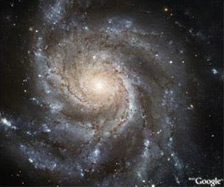About 4.4 billion planets are similar to Earth in size and temperature, suggesting they may be able to host life, according to a survey of the galaxy using telescopes operating in space and on the ground.
The number is an estimate based on information taken from 42,000 stars similar to the Earth’s sun and their surrounding planets by the National Aeronautics and Space Administration’s Kepler Space Telescope, as well as telescopes in Hawaii. Ideal planet climate — not too hot or too cold — was determined by how far they were away from their stars, according to the report today in the Proceedings of the National Academy of Sciences.
The scientists, including Geoffrey Marcy at the University of California at Berkeley, used those findings to extrapolate how many similar planets might exist across the galaxy. That number suggests Earth may not be so unique after all, he said.
“The New York Stock Exchange will not budge a penny at the news about Earth-like planets,” Marcy wrote in an e-mail. “Still, all of humanity is richer. The discovery of Earth-like planets puts our beautiful home planet into a cosmic perspective and gives us knowledge about our place in our galactic community.”
Two reports last week in the journal Nature showed that a planet, called Kepler-78b, located about 400 light years away, has a similar density and size to Earth yet is much hotter and can’t support life. The planet was discovered earlier this year using data from the Kepler telescope.
100 Billion
About 20 percent of more than 100 billion stars in the Milky Way galaxy are bodies like the sun. About 22 percent of those sun-like stars are orbited by planets similar in size to Earth and in the so-called habitable zone, making them not too hot nor too cold to support life, according to the study.
That means there are more than 4.4 billion Earth-sized planets in habitable zones orbiting sun-like stars, Marcy said.
The astronomers’ estimates also account for planets that Kepler missed and those that wouldn’t be picked up by Kepler because of their orbits.
The nearest Earth-sized temperate planet may be less than 12 light years from Earth, researchers said.
“With tens of billions of these water-laden Earth-size planets, surely some of them have all the necessary attributes of life,” Marcy said. “Our best shot is to point our radio and television antennas at them, hoping to pick up their Reality TV shows. Perhaps someday we will be part of a great Galactic Internet, communicating with our kindred spirits among the stars.”
–Editors: Angela Zimm, Andrew Pollack
To contact the reporter on this story: Nicole Ostrow in New York at nostrow1@bloomberg.net
To contact the editor responsible for this story: Reg Gale at rgale5@bloomberg.net
![]()

